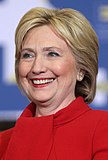2016_Hawaii_Democratic_caucuses
The 2016 Hawaii Democratic presidential caucuses were held on March 26 in the U.S. state of Hawaii as one of the Democratic Party's statewide nomination contests ahead of the 2016 presidential election.
While the State of Hawaii's primary for the 2016 Senate and House elections are scheduled to be held only on August 13,[1] both the Democratic Party and the Republican Party opted out to hold their own caucuses. With the Republican caucus having taken place earlier in March, the Republican Party did not hold any caucuses on March 26, while the Democratic Party held concurrent caucuses in Alaska and in Washington state.


